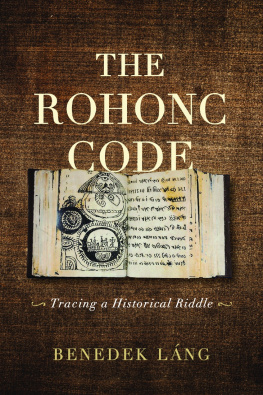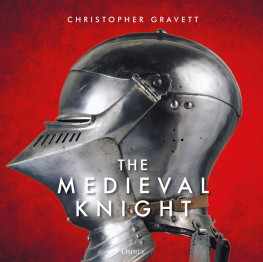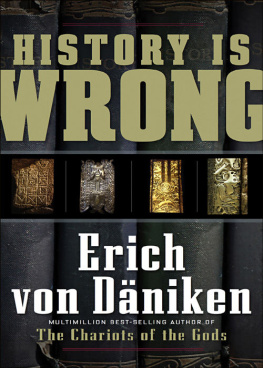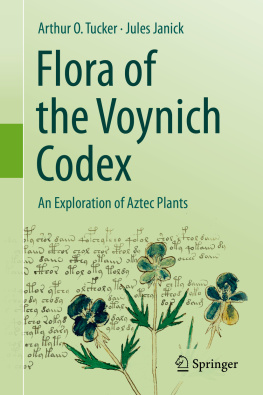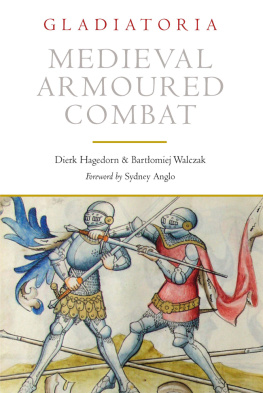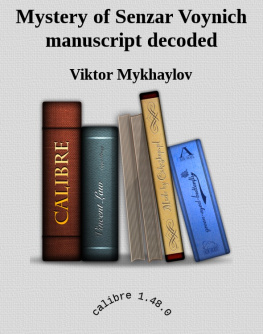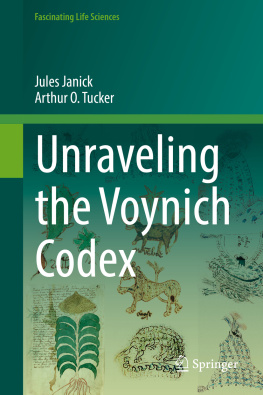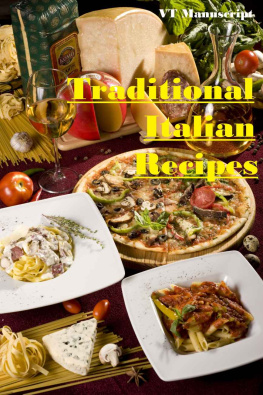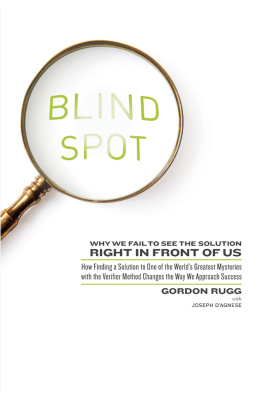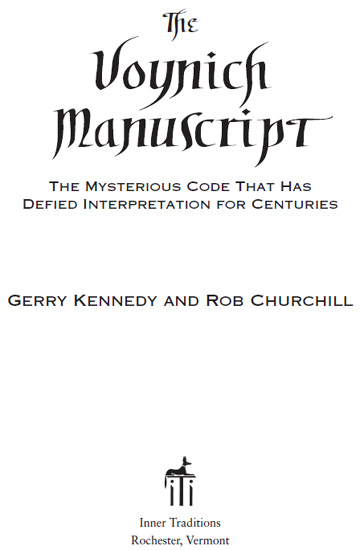
For Zoey, Jemma and Morgan, still the original and best line-up.
For my mother, Elizabeth Joan. And for my father, Sidney Trevor, who sadly never saw this books completion.

ACKNOWLEDGEMENTS
PARTICULAR THANKS TO LAURIE GREEN whose chance remark set the ball rolling. This book would also never have been written without the encouragement and belief of Richard Gollner; Anthony Cheetham, who gave the project the go-ahead; and Alan Samson, who has guided it to completion. A big thank you to Georgina Laycock and all the dedicated staff at Orion, and our wonderful editors, Stacey McNutt and Lucinda McNeile, who provided innumerable creative suggestions and invaluable support to the authors.
Many thanks must go to Lucy Sandys-Winsch for the mountain of research she very kindly shared with us, and likewise all the team who worked on the Mentorn documentary, especially Paul Copeland. Similarly Nigel Acheson, who collaborated on the original documentary for BBC Radio 4.
A very large debt of gratitude is owed to that enthusiastic group of manuscript aficionados that we have come to know affectionately as the Voynicheros. From this numerous band special mention must be made of Ren Zandbergen and Gabriel Landini, along with Jacques Guy, Nick Pelling, Dana Scott, Adam McLean et al. Thanks also to Jim Finn for contributing a prcis of his theory, and Tim Mervyn for allowing us access to his research and (as yet) unpublished manuscript.
We also received much help in our researches from a variety of sources: Stephen Parkin and John Hopson at the British Library, Richard Aspin at the Wellcome Institute, Carol Spero and Margaret Till for access to Voynich archive material, Kevin Boole, Barbara Garlick, David Saunders, Andrew Cook, Brian Clegg, Karen Howell, and Dave Davies at Kew Gardens. Thanks also to Lol Henderson and Bob McCabe for various introductions and much advice, and Graham Meek for his technical support to two computer illiterates.
On a personal level we would like to thank all those friends and family who have provided encouragement and many sympathetic ears to our moans and worries during the sometimes painful writing period of this book. Honourable mentions in dispatches go to Ian Watson, Jenni Whiteside, K. Krombie, Ivan Davies, Monja Boonzaier, and special thanks to the unflagging spirit of the House of Peers.
ILLUSTRATIONS
INTRODUCTION
THIS IS A BOOK about a book. More bizarrely, this is a book about a book no one can read or understand. A book that has puzzled, frustrated and ultimately confounded scholars, intellectuals and cryptologists for the last ninety years, and probably for many years before that. A book whose illustrations and cryptographic originality set it far apart from other medieval manuscripts, and whose impregnability makes it unique. The story of the book stretches back through time and across continents, and is interwoven with the lives of many astonishing characters, and generations of would-be solvers, over the last eight hundred years. This book attempts to tell that story; not just of the inscrutable manuscript, but of some of those people through whose hands it has passed. Inevitably, this story throws up more questions than the answers it provides.
One of the few incontrovertible facts about the manuscript is that it was first brought to the worlds attention by the man whose name it still bears, Wilfrid Michael Voynich. Like a pebble dropped into a still pond, Voynichs discovery in 1912 sent ripples of interest in all directions. Since then, the manuscript has attracted the attention of academics, military and secret service cryptanalysts, and a vast swathe of keen amateur cipher breakers and puzzle solvers. Yet this most enduring of enigmas remains largely unknown to the average lay person, and the manuscript itself lies hidden from general view in the Beinecke Rare Book and Manuscript Library at Yale University. Gerry Kennedy, one of the authors of this book, was no different from so many others in his ignorance of the manuscripts existence, or of his very personal connection with its discovery, until a chance comment at a family gathering set in motion the three years of research that culminated in the writing of this book.
Sometimes, the benevolent aspect of a sad occasion like a funeral is the tribal coming together of an immediate family with its more distant kin, often far-flung both in terms of geography and familiarity. This was certainly true of the gathering to mark the passing of my aunt Doreen in November 2000. Her funeral in Staffordshire was an almost pleasant affair in the strange way that loss and a reminder of collective mortality can be soothed by the polite warmth of the following reception. Back at the house where she had lived I saw my two cousins and met their grown-up sons. I was chatting, teacup in hand, to Laurie, one of the latter, when he asked me whether I knew about a much further-flung relative of ours, Wilfrid Voynich. Did I know about the famous manuscript that Voynich had discovered?
The exotic name rang no bells at all. Our family was unequivocally English as far as I knew, and from working-class stock not given to literary discoveries. I vaguely remembered, however, some probably fusty Victorian antecedents named Boole (my maternal grandmothers maiden name), who were apparently a cut above the ordinary. My brother knew little of this ancestral line, but he did turn up a well-thumbed family tree, once owned by another aunt. On this yard-wide banner the descendants of John and Mary Boole, who both died around the time of the 1851 Great Exhibition, were hung like an elaborate mobile, a paper registry of names previously unknown to me but connected by a genealogical thread.
There were three main strands pendant from their sons, Charles, William and George. I dangled eventually from William; Charles, though prolific, did not seem to have spawned anyone exotic. It was George who provided the connection. I remembered then the talk of the famous mathematician, George Boole, who had invented the modern algebra of logicnot so fusty after all! He died in 1864, the same year that his wife Mary gave birth to the youngest of his five daughters, Ethel. It was she who had married Wilfrid Voynich. At the time this previously unknown family history seemed giddy stuff. A passing comment had offered a Lion, Witch and Wardrobe glimpse into unsuspected territory peopled with rare creatures.
Later I logged on the internet. Voynich revealed over two thousand sites. I scrolled enthusiastically through the information that came tumbling onto the screen, and glimpsed the manuscript that my distant relative Wilfrid had discovered. The tantalising, undeciphered script nuzzled up to the most extraordinary illustrations of herb-like plants, zodiac wheels and a whole bevy of plump little naked women holding stars aloft like toy balloons, or parading arm in arm whilst dipping their toes in baths of green liquid. It was at one and the same time fantastic yet down-to-earth, promising great secrets that could be unlocked with the right key to hand. Here was a sexy mystery-puzzle with which anyone could play detective.
In July 2001, while visiting my daughter in New York, I borrowed a car to drive the 120 miles north to New Haven, Connecticut, the home of Yale University. With similar buildings and pseudo-gothic towers, the place is a little like Oxford or Cambridge in so far as the university is its main industry, and gown merges physically with town. The occasional gilded dome reminded me presciently of the cathedrals within the Kremlin, but the Beinecke Library itself was ultra-modern, looking rather like a pile of black waffles stacked into a cube, the whole resting on four obelisk legs.
Next page

